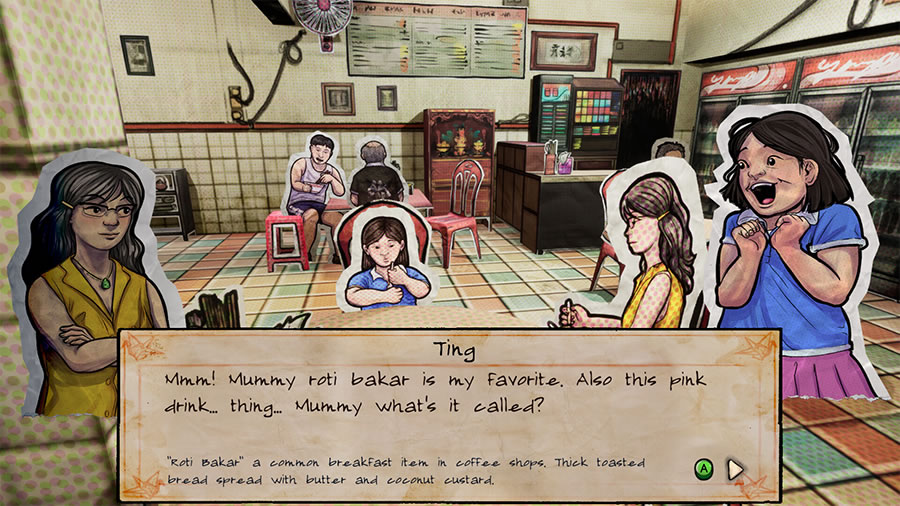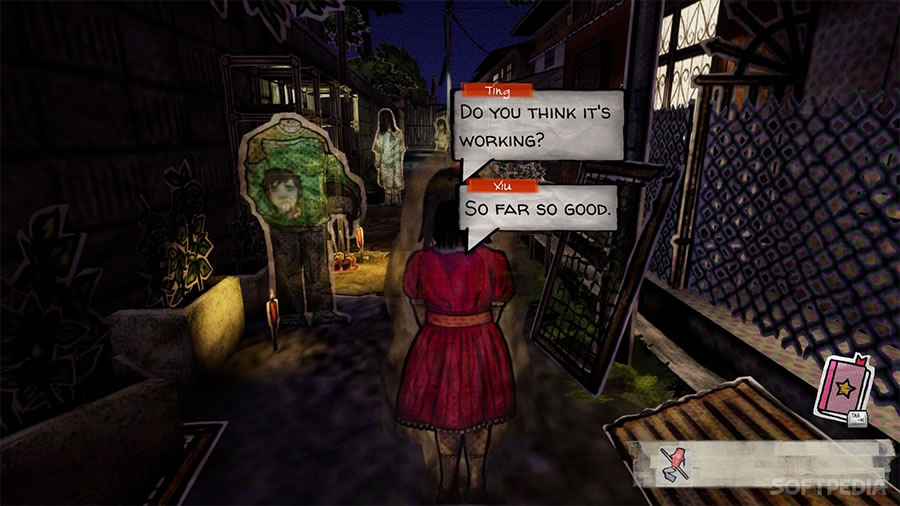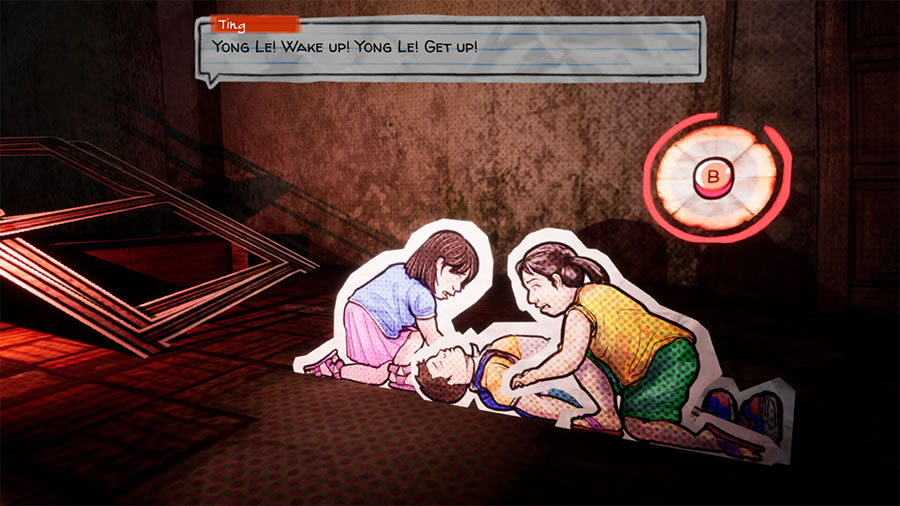- CLASSIC MAGAZINES
- REVIEW CREW
A show recapping what critics thought back
when classic games first came out! - NEXT GENERATION'S BEST & WORST
From the worst 1-star reviews to the best
5-stars can offer, this is Next Generation! - NINTENDO POWER (ARCHIVE)
Experience a variety of shows looking at the
often baffling history of Nintendo Power! - MAGAZINE RETROSPECTIVE
We're looking at the absolutely true history of
some of the most iconic game magazines ever! - SUPER PLAY'S TOP 600
The longest and most ambitious Super NES
countdown on the internet! - THEY SAID WHAT?
Debunking predictions and gossip found
in classic video game magazines! - NEXT GENERATION UNCOVERED
Cyril is back in this spin-off series, featuring the
cover critic review the art of Next Generation! - HARDCORE GAMER MAGAZING (PDF ISSUES)
Download all 36 issues of Hardcore Gamer
Magazine and relive the fun in PDF form!
- REVIEW CREW
- ELECTRONIC GAMING MONTHLY
- ELECTRONIC GAMING MONTHLY RANKS
From Mario to Sonic to Street Fighter, EGM
ranks classic game franchises and consoles! - ELECTRONIC GAMING MONTHLY BEST & WORST
Counting down EGM’s best and worst reviews
going year by year, from 1989 – 2009! - ELECTRONIC GAMING BEST & WORST AWARDS
11-part video series chronicling the ups and
downs of EGM’s Best & Worst Awards!
- ELECTRONIC GAMING MONTHLY RANKS
- GAME HISTORY
- GAME OVER: STORY BREAKDOWNS
Long-running series breaking down game
stories and analyzing their endings! - A BRIEF HISTORY OF GAMING w/ [NAME HERE]
Real history presented in a fun and pithy
format from a variety of game historians! - THE BLACK SHEEP
A series looking back at the black sheep
entries in popular game franchises! - INSTANT EXPERT
Everything you could possibly want to know
about a wide variety of gaming topics! - FREEZE FRAME
When something familiar happens in the games
industry, we're there to take a picture! - I'VE GOT YOUR NUMBER
Learn real video game history through a series
of number-themed episodes, starting at zero! - GREAT MOMENTS IN BAD ACTING
A joyous celebration of some of gaming's
absolute worst voice acting!
- GAME OVER: STORY BREAKDOWNS
- POPULAR SHOWS
- DG NEWS w/ LORNE RISELEY
Newsman Lorne Riseley hosts a regular
series looking at the hottest gaming news! - REVIEW REWIND
Cyril replays a game he reviewed 10+ years
ago to see if he got it right or wrong! - ON-RUNNING FEUDS
Defunct Games' longest-running show, with
editorials, observations and other fun oddities! - DEFUNCT GAMES QUIZ (ARCHIVE)
From online quizzes to game shows, we're
putting your video game knowledge to the test!- QUIZ: ONLINE PASS
Take a weekly quiz to see how well you know
the news and current gaming events! - QUIZ: KNOW THE GAME
One-on-one quiz show where contestants
find out if they actually know classic games! - QUIZ: THE LEADERBOARD
Can you guess the game based on the classic
review? Find out with The Leaderboard!
- QUIZ: ONLINE PASS
- DEFUNCT GAMES VS.
Cyril and the Defunct Games staff isn't afraid
to choose their favorite games and more! - CYRIL READS WORLDS OF POWER
Defunct Games recreates classic game
novelizations through the audio book format!
- DG NEWS w/ LORNE RISELEY
- COMEDY
- GAME EXPECTANCY
How long will your favorite hero live? We crunch
the numbers in this series about dying! - VIDEO GAME ADVICE
Famous game characters answer real personal
advice questions with a humorous slant! - FAKE GAMES: GUERILLA SCRAPBOOK
A long-running series about fake games and
the people who love them (covers included)! - WORST GAME EVER
A contest that attempts to create the worst
video game ever made, complete with covers! - LEVEL 1 STORIES
Literature based on the first stages of some
of your favorite classic video games! - THE COVER CRITIC
One of Defunct Games' earliest shows, Cover
Critic digs up some of the worst box art ever! - COMMERCIAL BREAK
Take a trip through some of the best and
worst video game advertisements of all time! - COMIC BOOK MODS
You've never seen comics like this before.
A curious mix of rewritten video game comics!
- GAME EXPECTANCY
- SERIES ARCHIVE
- NINTENDO SWITCH ONLINE ARCHIVE
A regularly-updated list of every Nintendo
Switch Online release, plus links to review! - PLAYSTATION PLUS CLASSIC ARCHIVE
A comprehensive list of every PlayStation
Plus classic release, including links! - RETRO-BIT PUBLISHING ARCHIVE
A regularly-updated list of every Retro-Bit
game released! - REVIEW MARATHONS w/ ADAM WALLACE
Join critic Adam Wallace as he takes us on a
classic review marathon with different themes!- DEFUNCT GAMES GOLF CLUB
Adam Wallace takes to the links to slice his way
through 72 classic golf game reviews! - 007 IN PIXELS
Adam Wallace takes on the world's greatest spy
as he reviews 15 weeks of James Bond games! - A SALUTE TO VAMPIRES
Adam Wallace is sinking his teeth into a series
covering Castlevania, BloodRayne and more! - CAPCOM'S CURSE
Adam Wallace is celebrating 13 days of Halloween
with a line-up of Capcom's scariest games! - THE FALL OF SUPERMAN
Adam Wallace is a man of steel for playing
some of the absolute worst Superman games! - THE 31 GAMES OF HALLOWEEN
Adam Wallace spends every day of October afraid
as he reviews some of the scariest games ever! - 12 WEEKS OF STAR TREK
Adam Wallace boldly goes where no critic has
gone before in this Star Trek marathon!
- DEFUNCT GAMES GOLF CLUB
- DAYS OF CHRISTMAS (ARCHIVE)
Annual holiday series with themed-episodes
that date all the way back to 2001!- 2015: 30 Ridiculous Retro Rumors
- 2014: 29 Magazines of Christmas
- 2013: 29 Questionable Power-Ups of Christmas
- 2012: 34 Theme Songs of Christmas
- 2011: 32 Game Endings of Christmas
- 2010: 31 Bonus Levels of Christmas
- 2009: 30 Genres of Christmas
- 2008: 29 Controls of Christmas
- 2007: 34 Cliches of Christmas
- 2006: 33 Consoles of Christmas
- 2005: 32 Articles of Christmas
- 2004: 31 Websites of Christmas
- 2003: 29 Issues of Christmas
- 2002: 28 Years of Christmas
- 2001: 33 Days of Christmas
- NINTENDO SWITCH ONLINE ARCHIVE
- REVIEW ARCHIVE
- FULL ARCHIVE
Paper Ghost Stories: Third Eye Open
From the moment I saw the Paper Ghost Stories trailer, I was hooked. I loved the paper-thin cutout art style and am a big fan of ghost stories in general, so I knew that Third Eye Open would be right up my alley. It’s a childhood tale of a young girl and her ghost friend as they navigate the moving process, deal with bullies and come to grips with going to a brand-new school. Is this supernatural thriller a spooky good time or does it give up the ghost? That’s what we’re about to find out when I review Paper Ghost Stories: Third Eye Open by Cellar Vault Games.
Third Eye Open revolves around a shy young girl name Ting, who moves to Malaysia along with her overbearing father and doting mother. Although she’s not good at making new friends, Ting quickly bonds with Xiu, a mysterious girl in a red dress that just so happens to be a ghost. Unfortunately, this means that Ting is the only one that can see Xiu, so everybody else in her life either thinks she’s crazy or has an imaginary friend, which is just one of the many bones of contention she has with her perpetually-upset father.
The story takes place over several years of Ting and Xiu’s friendship, which sees her become more confident and independent as she learns to cook, improves her social skills and goes to school. However, no matter how much she grows, Ting can’t shake the notion that she’s not like other people. She can see and interact with ghosts, something she quickly realizes is a curse. At the same time, Xiu is coming to grips with the reality that, as a ghost that nobody can see, there’s nothing she can do to help Ting if she gets in serious trouble. And, as it turns out, Ting is about to get in serious trouble.
It starts simple enough, with a camping trip that spirals out of control when some of the older kids convince everybody to search for spirits in the spooky forest. This eventually leads to Ting and her friends investigating an abandoned old house that is rumored to be haunted. Little did she know just how much this one bad decision would haunt her life for the next few years.
Paper Ghost Stories can best be described as a dialog-heavy visual novel with some light adventure gaming. The story is mostly told through conversions Ting is having with Xiu, her parents, friends, teachers and other ghosts. When we’re not talking, we control what looks like a paper cutout of Ting as she walks around the various environments picking up items and solving extremely simple puzzles. This can be anything from picking up garbage at the park to clearing the dishes after dinner. All things you would expect when controlling a young child.
There are other activities, most of which feel like simplistic mini-games. For example, Ting will help one of her friends study the latest homework, which means solving some extremely easy math problems. There are also multiple times where you’ll help prepare food with mom and dad. And, as kids do, there’s even a marble tournament. That ends up being a lot more fun than you might expect.
Although it’s not a big part of the game, there are also stealth levels scattered throughout Paper Ghost Stories. This comes in a couple of forms, but the most common shows you a cursor above somebody’s head showing which direction they are looking. The goal is to sneak past them when they either look away or shut their eyes. It’s both simple and surprisingly forgiving.
Even with a few mini-games and stealth sections, this is primarily a story-focused narrative game. If you don’t like reading dialog bubbles, then turn back immediately, because you’re going to hate a vast majority of this game. However, from a storytelling perspective, there’s a lot to like here. Xiu’s presence works as more than just a ghost story, but also as a way to give Ting’s worries and anxieties a voice. Even without the supernatural element, this would be an emotional story about a shy young girl that nobody understands or takes the time to know. Everybody in Ting’s life is either too busy, too angry or too wrapped up in their own lives to hear what she’s saying, and the young girl clearly feels isolated and alone. All she’s looking for is friendship, and yet her best friend is often the cause of her loneliness.
The story is at its best when it’s dealing with the very real human dramas that impact both young children and grown adults. There’s a whole side-story dealing with the mother that can be easily explained one way, yet we see it through the eyes of Ting, who is convinced that everything is her fault. If only she was normal and couldn’t see ghosts or go camping or go into that haunted house ... then things would be different. In reality, that may not be true, but the story does a good job of showing us how a young child can (and will) blame themselves for adult problems that are outside of their control.
In a twist I didn’t see coming, it’s actually the supernatural parts of the ghost story that fall a little flat. There’s a point early in the game where it looks like Ting had gained her confidence and decided to start investigating the backstories of the ghosts she’s seeing. For example, she keeps finding wet books and backpacks at her pre-school, hinting at a tragic backstory for one of the former students. This intrigued Ting and her friends so much that solving the case was all they talked about, but the resolution was incredibly anticlimactic and doesn’t really lead to much.
The logical next step would have been for Ting to start investigating Xiu’s mysterious death. After all, Xiu doesn’t remember what happened, so you would think that her best friend would try to crack the case. But that doesn’t happen. Years go by and it’s barely even mentioned. When we finally do learn about Xiu’s untimely death, it’s through an unrelated cinema. It neither connects with the rest of the story nor has much of an emotional impact on the characters. It’s just another anticlimactic plot point.
Even the scary creatures that are haunting Ting’s nightmares feel wholly unrelated to the rest of the story. Sure, we learn more about the awful things that happened in that old, abandoned house, but to what end? The final act of the story is extremely messy and I didn’t find the resolution to be all that satisfying. Running from ghosts may offer more tension, but the game’s best bits are all rooted in the family drama and childhood story.
One thing Paper Ghost Stories is good at is setting a mood. No matter if you’re exploring the haunted house or the scary campsite, you can cut the atmosphere with a knife. I absolutely love the look of the game, mostly using paper-thin cutouts that are interacting with a 3D world. It’s like the horror game version of Paper Mario. The unique style does an excellent job of making us feel like we’re in a far-off land that looks and feels completely different from what we’re used to, not unlike what Ting is going through. And as she becomes better acquainted with the world around her, so do we. By the end of the game, the once jarring art style felt natural and welcoming. I didn’t want to leave it.
That said, I do wish there was more actual adventuring. I suppose a game like Paper Ghost Stories would fall into the “visual novel” category, which is a genre that doesn’t always have mini-games and adventuring. Third Eye Open does a good job of adding more to do than just reading, but I wish the balance was better. The things you end up doing throughout the story feel small and inconsequential. We rarely have an opportunity to just walk around and explore the various environments, because this is the kind of game where you’ll take five steps and get into a lengthy conversion. If you’re going in hoping to solve a bunch of missions and solve puzzles, then you’re going to be extremely disappointed (and probably a little bored).
It's also worth mentioning that Paper Ghost Stories comes with a second story called 7PM, which was originally released back in 2020 and is a much shorter affair than Third Eye Open. It stars a new batch of haunted children and their obsession with a new person who moves into their apartment complex. It’s a chilling little tale that does eventually connect to Third Eye Open, though that’s something you’ll want to discover on your own.
As a series, I hope Paper Ghost Stories continues. While I’m a little mixed on the story of Ting and her ghost friend Xiu, there’s a lot to like about both the narrative and the presentation. There’s a lot of promise here, and with a more satisfying story and better gameplay elements, Paper Ghost Stories could be something truly special. As it is, Third Eye Open is a solid enough effort that tries to juggle a childhood story with supernatural elements. It doesn’t all come together as neatly as I would have liked, but I’m happy that I got to meet Ting and her ghost friend Xiu.
HOME |
CONTACT |
NOW HIRING |
WHAT IS DEFUNCT GAMES? |
NINTENDO SWITCH ONLINE |
RETRO-BIT PUBLISHING
Retro-Bit |
Switch Planet |
The Halcyon Show |
Same Name, Different Game |
Dragnix |
Press the Buttons
Game Zone Online | Hardcore Gamer | The Dreamcast Junkyard | Video Game Blogger
Dr Strife | Games For Lunch | Mondo Cool Cast | Boxed Pixels | Sega CD Universe | Gaming Trend
Game Zone Online | Hardcore Gamer | The Dreamcast Junkyard | Video Game Blogger
Dr Strife | Games For Lunch | Mondo Cool Cast | Boxed Pixels | Sega CD Universe | Gaming Trend
Copyright © 2001-2025 Defunct Games
All rights reserved. All trademarks are properties of their respective owners.
All rights reserved. All trademarks are properties of their respective owners.
































